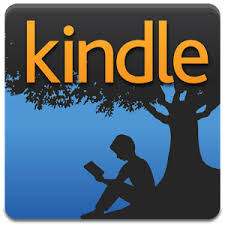
As Amazon popularized ebooks over the last decade, it catalyzed a necessary change in our reading habits. By 2007, when the first Kindle emerged, the publishing world had to compete with Facebook, mobile games, and a hundred other distractions; to retain their vitality, books needed to adapt. Over the years, Amazon has stuffed its e-readers with features making them easier to read, like embedded dictionaries and translators; it’s added a social network; it’s even introduced a feature that seamlessly turns text into audio and back at our convenience. Books are vessels for transmitting ideas, and today the vessels have ideas of their own own: about what we should read, and how we should read it.
Hundreds of millions of tablets and e-readers have been sold, but today we’re still inclined to think of a book as words on a page. Amazon’s success with Kindle has hinged on recognizing how much more they can be. So where does the company go from here?
It took three years for Kindle to come to market. The first model wasn’t particularly beautiful: a $400, off-white chunk of plastic with a full QWERTY keyboard. But before the world had ever heard of an app store, Amazon had integrated its bookstore directly into the device. For the first time, you could summon almost any book you could think of within seconds, no matter where you were.
The initial, never-quantified run of devices sold out in five and a half hours, and soon Kindle became synonymous with e-reading. Amazon has never released sales figures for the Kindle, but analysts believe the company has sold more than 80 million of them, and Morgan Stanley estimated the devices would generate revenues of $5 billion this year. (Amazon declined to comment on sales figures.)
More than that, Kindle brought ebooks into the mainstream. About 28 percent of Americans read an ebook last year, up from 17 percent in 2011. And the more popular they became, the more Amazon pushed to transform them.
From the start, Amazon has defined its hardware mission narrowly: to build devices that disappear in the hand, with uniquely useful features, for a low price. “We would never make a gold thing, because that’s too distracting,” says Amazon’s Chris Green. “There are many companies that create pieces of jewelry. We’re not going to do that, because that’s an added cost that takes away from the actual content.”
There’s another dimension to the future of reading, beyond how we read. It’s what we read: who writes it, who publishes it, how it gets distributed. Nowhere are more important decisions being made about those issues than at Amazon’s Seattle headquarters. With physical bookstores in a state of seemingly perpetual decline, Amazon has achieved a dominant position: the company sells 40 percent of all new books in the United States, and two-thirds of ebooks.
The notion that physical books are ending their life cycle is upsetting to people who hold them to be synonymous with literature and terrifying to those who make their living within the existing structures of publishing. As a lover of books, I sympathize. But why should a civilization that reads electronically be any less literate than one that harvests trees to do so? And why should a transition away from the printed page lessen our appreciation and love for printed books? Hardbacks these days are disposable vessels, printed on ever crappier paper with bindings that skew and crack. In a world where we do most of our serious reading on screens, books may again thrive as expressions of craft and design. Their decline as useful objects may allow them to flourish as design objects.
If you enjoyed this article, kindly like, share and post your comment please.
————————————————————————
Like that? Try this…
Kindle Unlimited Changed Everything



While learning oral storytelling traditions of native american and middle eastern culture back in undergraduate school (because that’s the only place a person would take that class 🙂 ), one of my professors mentioned that with the dawn of the Gutenberg press, the world became polluted with words. The oral tradition of storytelling (with stories passed down between cultures for generations) made sure that the best stories were being remembered and preserved, and the bad stories were fizzling out. Once the Gutenberg press pioneered mass printing, everything could be made permanent despite wether or not it was good or bad.
Do you feel like the digital age is doing that as well? I would love to hear your thoughts.
LikeLike